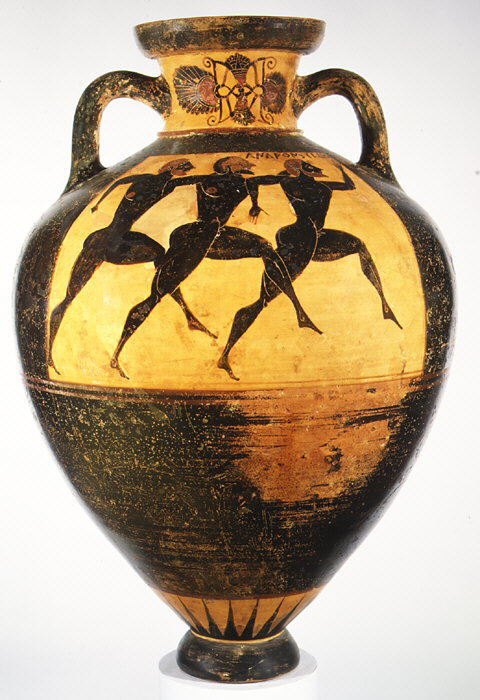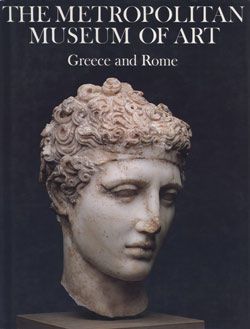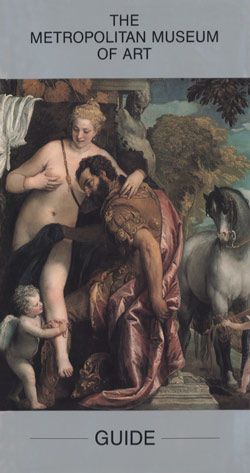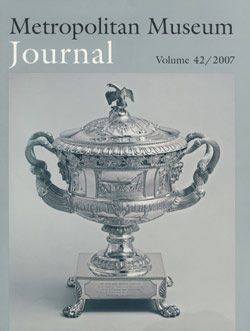Terracotta Panathenaic prize amphora (jar)
Signed by Nikias
Attributed to Sikelos
Obverse, Athena, with this inscription: one of the prizes from Athens. Nikias made me
Reverse, footrace, with this inscription: stadion race of men
From the second quarter of the sixth century B.C. on, victors in the contests of the Panathenaic festival in Athens were awarded a standardized amphora containing one metretes (about forty-two quarts) of olive oil from sacred groves in Attica. The official decoration on the front was a picture of a statue of Athena, fully armed. The scene on the back showed the event for which the prize was awarded.
This is the earliest Panathenaic amphora in the collection of The Metropolitan Museum of Art. It is also one of the earliest of those dated between 566 and 550 B.C., a period of some experimentation. The canonic ornaments for the neck and shoulder and even the placement of the official prize inscription did not become established until the last quarter of the sixth century; in the early group, no two amphorae are alike in these details. The stadion, identified here as the competition for which the prize was won, was a race of nearly two hundred yards.
This image cannot be enlarged, viewed at full screen, or downloaded.
This artwork is meant to be viewed from right to left. Scroll left to view more.








